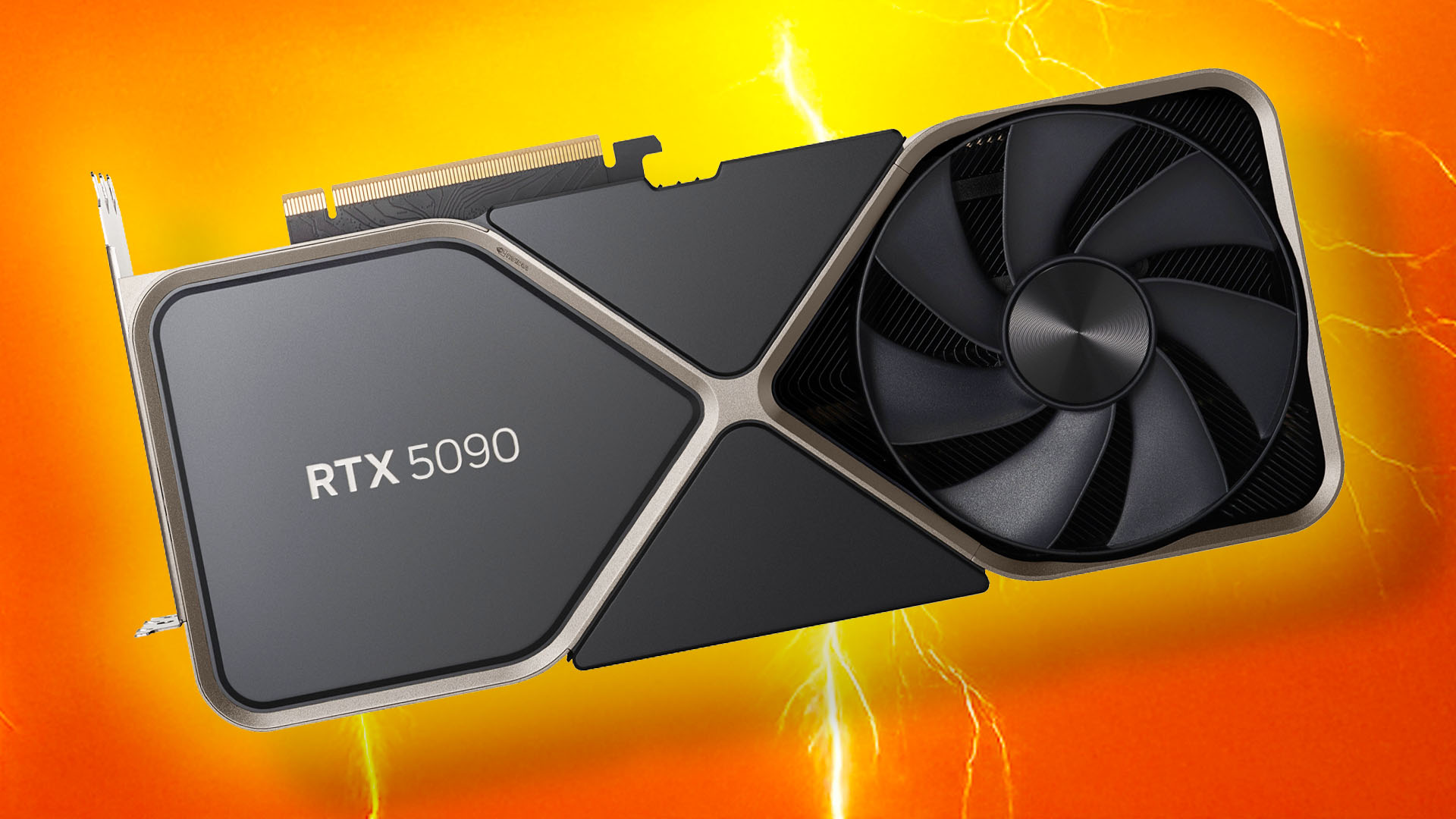The lid has now been officially lifted on the Nvidia GeForce RTX 5090, which is looking set to be the fastest graphics card for gaming. Several of the rumors about the specs have turned out to be true, and Nvidia is also furnishing its new Blackwell gaming GPU range with DLSS 4 and new neural rendering technologies.
Nvidia CEO Jensen Huang revealed the details of the new Nvidia Blackwell lineup at CES, where we were in attendance, and it’s looking likely to be the best graphics card in terms of raw performance when it comes out. In this guide, we’ll take you through the release date, specs, and price of the new GPU.
Nvidia GeForce RTX 5090 release date
The RTX 5090 release date is Thursday, January 30, 2025, when Nvidia says the new GPU will be on store shelves. Nvidia announced the new GPU at CES 2025 on January 6.
Nvidia GeForce RTX 5090 price
The RTX 5090 price is $1,999 at MSRP, which we expect to be the price for the Founders Edition when it’s released. We expect overclocked graphics cards from third parties to have higher prices. This price is significantly higher than the $1,599 MSRP of the RTX 4090, although the 4090 is rarely found at this price now.
Nvidia GeForce RTX 5090 specs
The RTX 5090 specs include 32GB of GDDR7 VRAM and 21,760 CUDA cores, as well as a huge memory bandwidth of 1,792GB/s.
| Nvidia GeForce RTX 5090 | |
| CUDA cores | 21,760 |
| RT cores | 4th-gen, 318 TFLOPS |
| Tensor cores | 5th-gen, 3,352 AI TOPS |
| Boost clock | 2.41GHz |
| Base clock | 2.01GHz |
| Interface | 16x PCIe 5.0 |
| VRAM | 32GB GDDR7 |
| Memory interface | 512-bit |
| Memory bandwidth | 1,792GB/s |
| Total board power | 575W |
| Power connectors | 1 x 16-pin |
With 21,760 CUDA cores, it looks as though the RTX 5090 is divided into 170 streaming multiprocessors (SMs), which would also give it 170 RT cores.
As a point of comparison, the GeForce RTX 4090 has 128 SMs, giving it 16,384 CUDA cores, meaning the RTX 5090 potentially has a lot more parallel processing power. However, this isn’t an apples-to-apples comparison, as the RTX 5090 will be built using the Blackwell architecture, rather than the Ada Lovelace architecture used by the 4090, and it may not have the same performance per core.
As was widely speculated, the RTX 5090 also uses GDDR7 VRAM attached to a super-wide 512-bit bus, which is much wider than the RTX 4090’s already fat 384-bit interface. The result is an enormous 1,792GB/s of memory bandwidth, suggesting that the VRAM has an effective speed of around 28Gbps. This bandwidth is huge compared to the RTX 4090’s bandwidth of just over 1TB/s.
Not only that, but the RTX 5090 also comes with a massive 32GB of GDDR7 VRAM, giving it plenty of headroom for professional work, as well as gaming at very high resolutions with all the settings maxed out.
There is a potential cost to all this power, though, which is the RTX 5090 power draw. Nvidia says the total graphics card power draw is a massive 575W, although that still means a stock-speed card only needs a single 16-pin power cable, shooting down previous speculation that the RTX 5090 needs two 16-pin power cables.
As expected, the GeForce RTX 5090 is also Nvidia’s first gaming GPU to use the new 16x PCIe 5.0 interface. You’ll still be able to install it in a PCIe 4.0 or even PCIe 3.0 slot, but you won’t get the full amount of bandwidth, which is likely to restrict performance on a PCIe 3.0 motherboard.
Finally, Nvidia has put the RTX 5090 frequency rumors to bed, and confirmed that the RTX 5090 clock speed is 2.41GHz for the boost clock, and 2.01GHz for the base clock.
In the meantime, if you want to buy a new graphics card now, check out our GeForce RTX 4080 Super review, where we benchmark Nvidia’s latest high-end GPU. It corrects the big pricing errors Nvidia made with the original RTX 4080, while also offering decent 4K gaming performance for $999.


